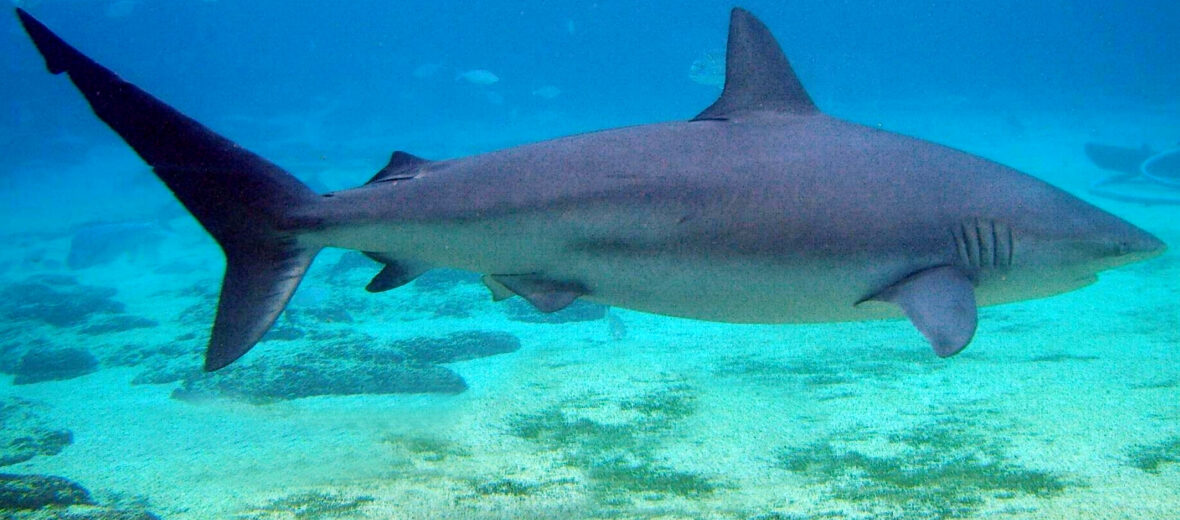
The dusky shark can be found in temperate and tropical oceans all around the world. These are requiem sharks (migratory, live-bearing sharks). Young sharks live in shallow coastal waters, while adults live in the open ocean. They can be found at depths of up to 1,300 feet. Sadly, due to their wonderful fins, these sharks are overfished for shark fin soup. Their meat, skin, and oil are also sought after. The shark’s numbers have decreased drastically over the years, earning them the classification of Endangered by the IUCN. Their numbers continue to decrease too.
First the Stats…
Scientific name: Carcharhinus obscurus
Weight: Up to 765 lbs.
Length: Up to 14 feet
Lifespan: Up to 40+ years
Now on to the Facts!
1.) The skin of the dusky shark is covered by diamond-shaped denticles (a style of scale).
2.) Their teeth on the upper jaw are triangular with saw-like edges. While the bottom jaw has narrow, pointed, serrated teeth.
3.) Fish, other sharks, rays, cuttlefish, octopuses, sea turtles, crustaceans, whale carcasses, and general ocean waste are all on the menu.
4.) Ocean acidification (when the ocean absorbs carbon and becomes more acidic) has hindered their sense of smell.
5.) Typically, these sharks can track smells with a 60% accuracy. Now it’s down to 15%. And sometimes, they actually get so confused as to the smell of certain foods that they actually turn away from some foods, mistaking them for non-food items.
But wait, there’s more on the dusky shark!
6.) These sharks are nocturnal (active at night).
7.) Bull sharks, tiger sharks, and great white sharks all prey on juvenile dusky sharks.
Did you know…?
The dusky shark has among the strongest bites in the shark world with a bite force of 132 lbs. per square inch!
8.) Female duskies birth their pups in the same waters in which they were born.
9.) The females are viviparous (birth live young) that birth up to 12 pups each season.
10.) These sharks are slow growing and reach sexual maturity at 20 years of age.
Now a Short Dusky Shark Video!
Be sure to share & comment below! Also, check out the Critter Science YouTube channel. Videos added frequently!
Want to suggest a critter for me to write about? Let me know here.



